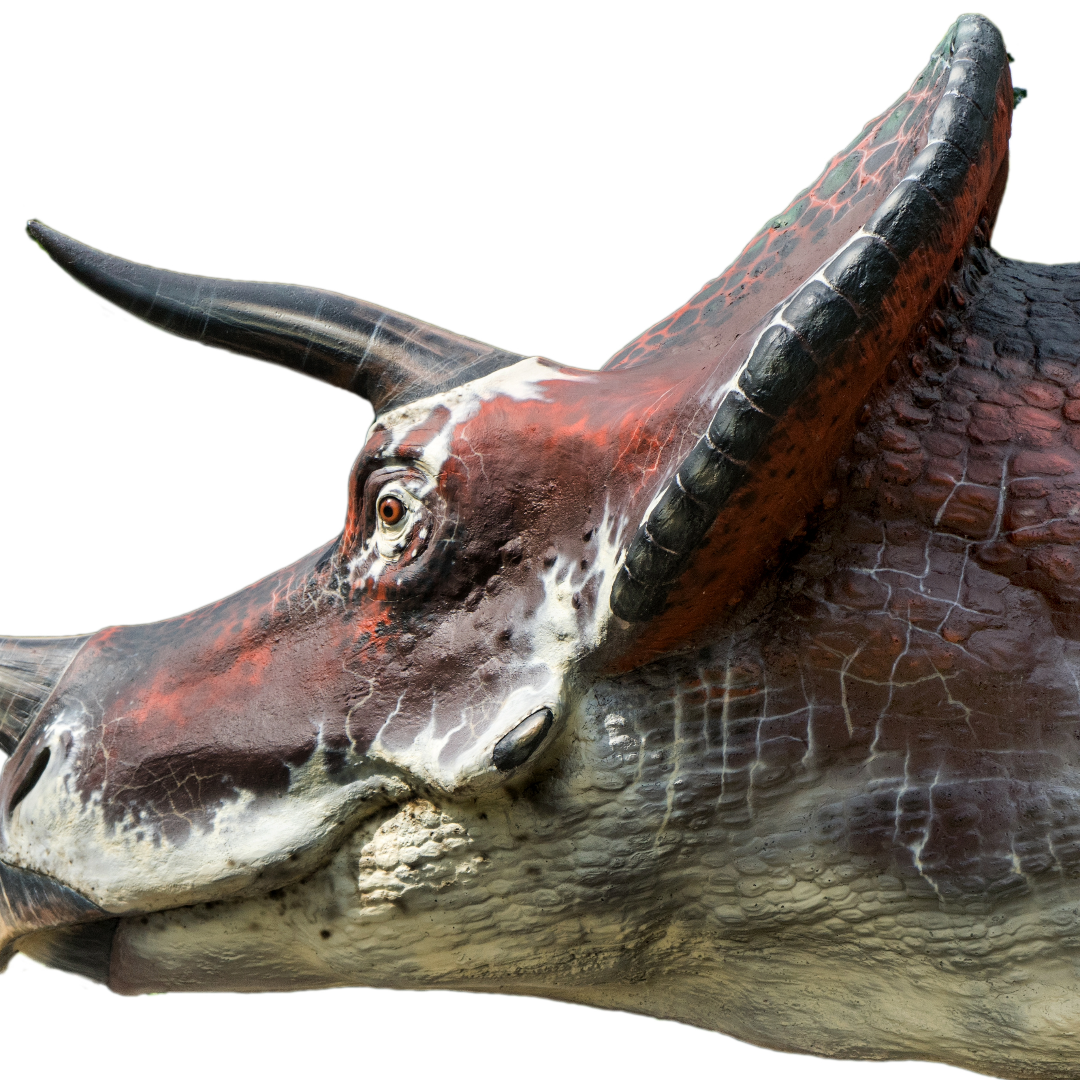This well known dinosaur was a herbivorous species that lived in the late Cretaceous period. Its ancestors, such as Psittacosaurus, lived in the Jurassic period.
Triceratops belongs to the Ceratopsia group, which is known for having one to three horns on their head. The group evolved from the earlier group of dinosaurs known as Psittacosaurus, which lived up to 101 million years ago.
Triceratops appeared around 68 million years ago, and is one of the biggest and well-known of the Ceratopsians.
What Triceratops Looked Like

The name Triceratops has ‘Tri’ in it because it has three horns. Triceratops was one of the biggest of the Ceratopsia, standing at 3 meters tall and 9 meters long. They probably weighed up to 12,000kg. Triceratops had huge teeth, meaning they likely ate a variety of tough plants, such as magnolias, sassafras, roses, redwoods, and willows. The average length of a triceratops horn is one meter (3.3ft).
To me, Triceratops seemed to be in a similar niche to some of our modern large mammals such as rhinos and hippos, except for the average counterparts being much larger on average. It’s the weaponised face and overall size, combined with being a “gentle herbivore” that reminds me of large modern mammals.
Where Triceratops Lived, and its Habitat
Triceratops lived in what is now North America. Their fossils have been found in Montana, North Dakota, Colorado, and Wyoming, as well as western Canada.
Triceratops lived in a variety of environments during the late Cretaceous period, including forests, swamps, and plains. The North American landscape during this time was subtropical, with warm and humid conditions. The climate was influenced by the Western Interior Seaway, a shallow sea that divided North America in two.
The plants that Triceratops likely ate varied depending on the environment it lived in. In forests, it may have eaten magnolias, sassafras, and other flowering plants. In swamps, it may have eaten ferns and other plants that grow in wet environments. In plains, it may have eaten grasses and other low-lying plants.
Triceratops shared its habitat with a variety of other dinosaur species, including Tyrannosaurus rex, Ankylosaurus, and Edmontosaurus. These species likely competed for resources, such as food and water. Triceratops may have also lived alongside Torosaurus, a closely related species that had a similar appearance but with a longer frill.
There has been a debate between experts about Torosaurus being a juvenile version of Triceratops, rather than its own species. I believe this has been put to rest now and the two are separate, distinct species. There was a similar debate about Pachycephalosaurus and Stygimyloch.
In addition to dinosaurs, Triceratops shared its habitat with other animals, such as crocodiles, turtles, and birds. The Western Interior Seaway was also home to a variety of marine life, including ammonites, mososaurs, and sharks.
Overall, Triceratops lived in a diverse and dynamic environment during the late Cretaceous period. Its habitat was influenced by a variety of factors, including climate, geography, and other species that lived alongside it. Studying Triceratops habitat can provide valuable insights into the ecology and evolution of this iconic dinosaur species.
Triceratops Behavior
Triceratops was a herbivore and likely ate tough plants. It may have lived alongside Torosaurus, and it’s possible that the Torosaurus was a species of juvenile Triceratops. Paleo scientists think Triceratops had an inflatable nose.
Additional Facts
- Triceratops is probably one of the most iconic dinosaur species alongside titans such as T. rex, Stegosaurus, and Brachiosaurus.
- Triceratops was around up to the last 3 million years before the last dinosaur extinction event 65 million years ago.
- Triceratops had a frill, which is a bony structure on the back of its skull. The frill was likely used for display and protection.
- Triceratops may have had a good sense of smell, as it had large olfactory bulbs in its brain.
- Triceratops is often depicted as battling against Tyrannosaurus rex in popular media, but it’s unclear if they actually fought in real life.
- Triceratops is one of the few dinosaur species whose fossils have been found with skin impressions, which provide valuable information about their appearance.
- Triceratops is a popular subject in paleontology research, as scientists study its bones and fossils to learn more about its behavior, evolution, and anatomy.
In conclusion, Triceratops is a fascinating dinosaur species that lived in the late Cretaceous period. Its iconic appearance, with three horns and a frill, has made it a popular subject in popular media and paleontology research. With its huge size, tough teeth, and herbivorous diet, Triceratops was a formidable herbivore that likely roamed the North American landscape alongside other dinosaur species.


